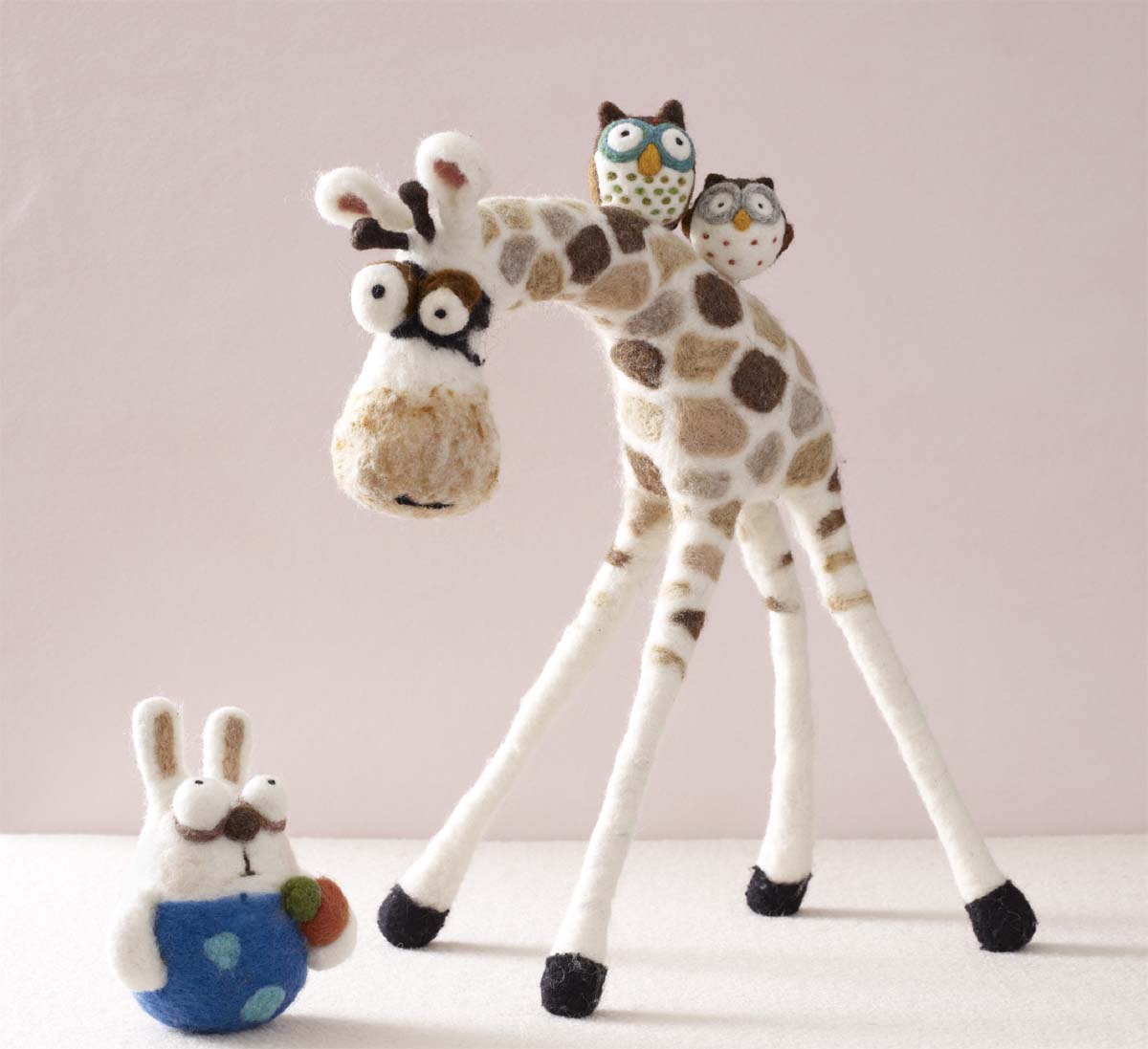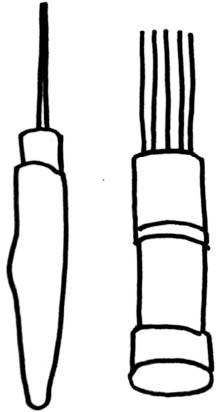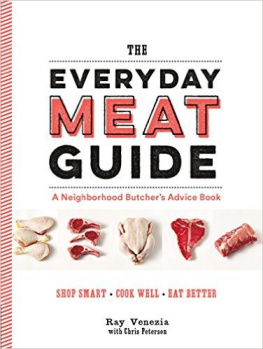 Text, how-to photographs, and illustrations copyright 2013 by Jackie Huang. Photographs copyright 2013 by Antonis Achilleos. Woolbuddy and all the characters, designs, and/or elements thereof and by Woolbuddy. Used under authorization. All rights reserved. No part of this book may be reproduced in any form without written permission from the publisher.
Text, how-to photographs, and illustrations copyright 2013 by Jackie Huang. Photographs copyright 2013 by Antonis Achilleos. Woolbuddy and all the characters, designs, and/or elements thereof and by Woolbuddy. Used under authorization. All rights reserved. No part of this book may be reproduced in any form without written permission from the publisher.
ISBN 978-1-4521-2993-8 The Library of Congress has previously cataloged this title under: ISBN 978-1-4521-1440-8 Designed by Allison Weiner Typeset by DC Typography Chronicle Books 680 Second Street San Francisco, California 94107 www.chroniclebooks.com
CONTENTS


INTRODUCTION
I have always had a love for the arts, and handmade crafts in particular. This passion drove me to study computer animation to foster my own creative skills, eventually landing me at Lucasfilm, where I worked as a 3-D story artist on the television series Star Wars: The Clone Wars. When my first daughter was born, I searched for quality toys that were safe, durable, well designed, and that would instill in her an appreciation of handmade articles. What I found instead were cheap, plastic toys that were not meant to last. So I decided to put my creative background to good use and make toys myself. I tried my hand at knitting and found it more challenging than expected.
Sewing took too long, and I didnt have the patience to stick with it. Then I discovered needle felting and was immediately taken. With just a few basic tools and one material, I could see my designs take shape. There really are no rules when it comes to this craftyou simply poke the wool until you are happy with the shape, and you can always add more wool on top to correct any mistakes. Felting is a lot like working with clay: you sculpt the fiber with your hands and a needle and turn it into fanciful shapes. But felting is much easier to do and, unlike clay, the final product is very kid-friendly.
Perfect for my little daughter! I started to illustrate and dream up the Woolbuddy characters, bringing them to life one by one with needle felting. At last, I was able to create the handcrafted stuffed animals that reflected the imaginative and magical world I wanted to share with my daughter. In just a few years, the Woolbuddy collection has grown to more than three hundred characters beloved by children and adults alike. The Woolbuddy world includes animals from the jungle, the farm, and the safari; sea creatures that frolic in the ocean; reptiles that lounge around the swamp; itty bitty critters that wander on land; and lovable monsters that live only in our imaginations. In this book, youll find instructions for making twenty of your very own buddies, from an adorably small guinea pig to a towering giraffe that stands over 1 ft/46 cm tall. The sections are organized by complexity, although as youll soon see, theres really very little skill needed to do this craft successfully while having fun along the way.
Mainly, what matters is how much time you want to dedicate to making your buddy. Only have a short hour? Whip up Pointy the Starfish . As you meet them, youll see that no two Woolbuddies are identical. Each character has intricate detailing that only needle felting can create. The step-by-step instructions will guide you to make the buddies look as they are pictured, but I hope that you are inspired to explore your own imagination with this versatile craft. Swap out the wool colors for different ones, change the size of your buddy, or simply use the projects as a starting point for your own creations.
Thats the beauty of needle feltingyou can easily change the size and appearance of any of your buddies features while keeping pace with the instructions. Whether youre a first-time crafter or a felting pro, in no time at all youll have a bevy of delightful creatures to enjoy and share. Jackie Huang
ACKNOWLEDGMENTS
I would like to thank all of the people who made this book possible: Allison Weiner and Lisa Tauber at Chronicle Books, Lynn Bartsch, my family, and, of course, everyone who has supported Woolbuddywithout all of you, I wouldnt be here.
GETTING STARTED

WHAT IS NEEDLE FELTING?

Welcome to the wonderful world of Woolbuddies, which makes use of the popular fabric art process of shaping raw wool with special barbed felting needles. When the needle is pushed through loose wool, the needles barbs catch and pull the fibers so they tangle and bind together to create a matted felt fabric. Using a single needle or a handheld tool with a cluster of felting needles, you can create any shape imaginable.
Whats more, with just a little practice, you can achieve fine and unique details. So grab some wool, a needle, and lets get started!

TOOLS AND MATERIALS

Needle felting requires only a few basic tools and materials, available at many craft stores and online. See Resources for suggestions on where to purchase a variety of felting supplies. Following is a list of the felting tools and materials needed to complete the projects in this book.
FELTING NEEDLE
This needle is used exclusively for felting, as it is designed to push and interweave the wool fibers. Felting needles have a small lip at the top to make thrusting easier, though some needles attach to or are designed with a handle, which makes holding them even more comfortable.
Needles are available in various sizes or gauges and commonly have a triangular blade. A star blade offers an extra blade edge, which can be useful for a faster finish if you are an advanced felter. A 36- or 38-gauge needle with a triangular blade works well for most felting work done with wool roving, which is what I recommend using for the projects in this book. A 38- or 40-gauge needle is best for finer fibers. CAUTION: Please take great care when working with felting needles, which have tiny barbs along the bottom half and extremely sharp tips. Keep needles away from small children and pets and carefully supervise use by older children.
Be sure to store needles in a safe place when not in use. 
NEEDLE FELTING TOOL (OPTIONAL)
A handheld needle felting tool offers a comfortable grip and the option to work with multiple needles. Pen-style tools generally hold a few needles, while larger-capacity tools can hold as many as twenty needles at a time. While a tool like this isnt strictly necessary, the flexibility to work with a few needles at once will save you time when doing the less detailed work, such as creating a body base that requires a lot of needle poking. When you want to do more detailed work, simply remove the other needles and work with just one.

MOLDS (OPTIONAL)
If youre new to needle felting or want to achieve a consistent look, you can use molds to guide you in making basic shapes.
Next page












 Text, how-to photographs, and illustrations copyright 2013 by Jackie Huang. Photographs copyright 2013 by Antonis Achilleos. Woolbuddy and all the characters, designs, and/or elements thereof and by Woolbuddy. Used under authorization. All rights reserved. No part of this book may be reproduced in any form without written permission from the publisher.
Text, how-to photographs, and illustrations copyright 2013 by Jackie Huang. Photographs copyright 2013 by Antonis Achilleos. Woolbuddy and all the characters, designs, and/or elements thereof and by Woolbuddy. Used under authorization. All rights reserved. No part of this book may be reproduced in any form without written permission from the publisher.

 WHAT IS NEEDLE FELTING?
WHAT IS NEEDLE FELTING? 

